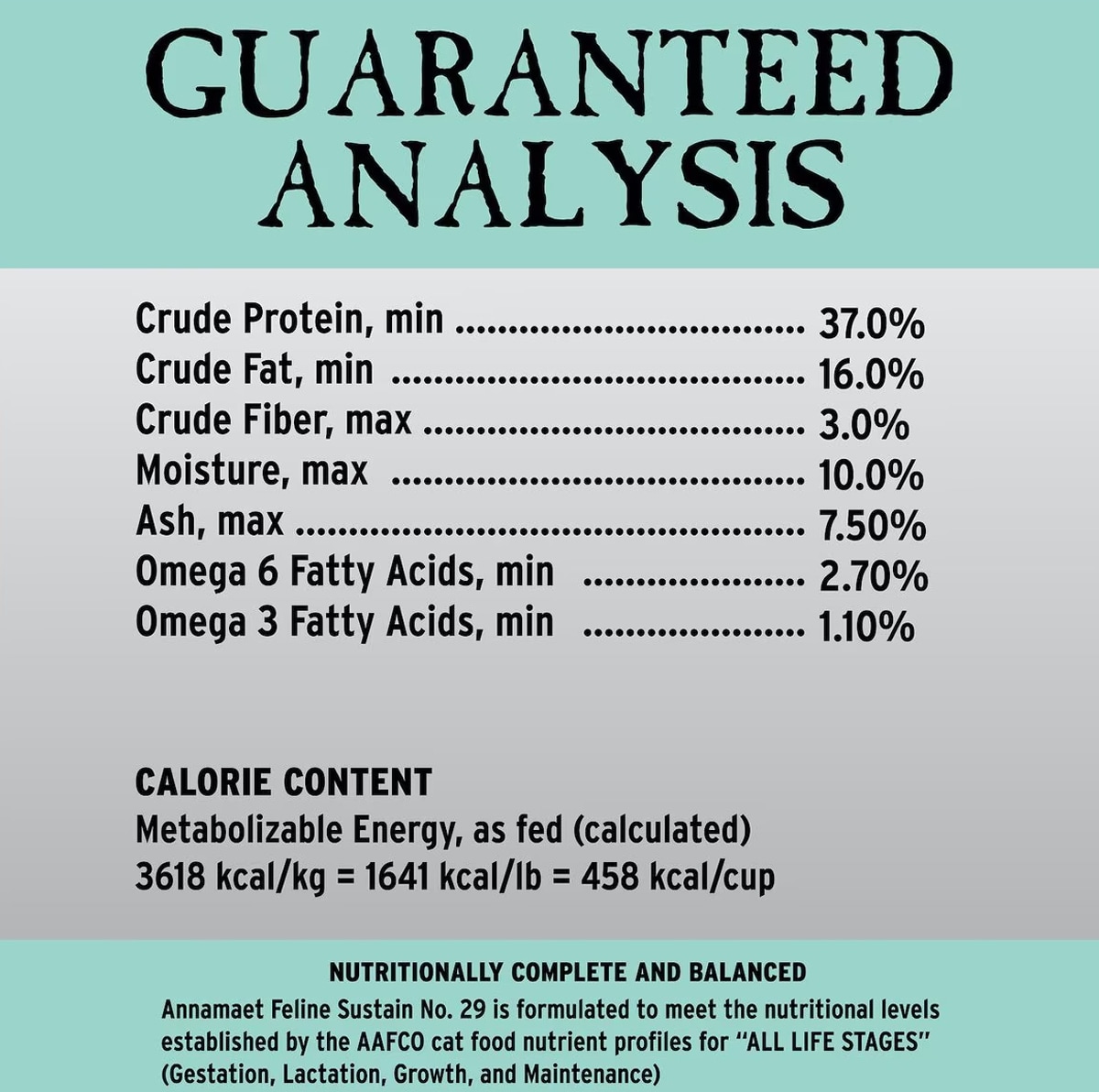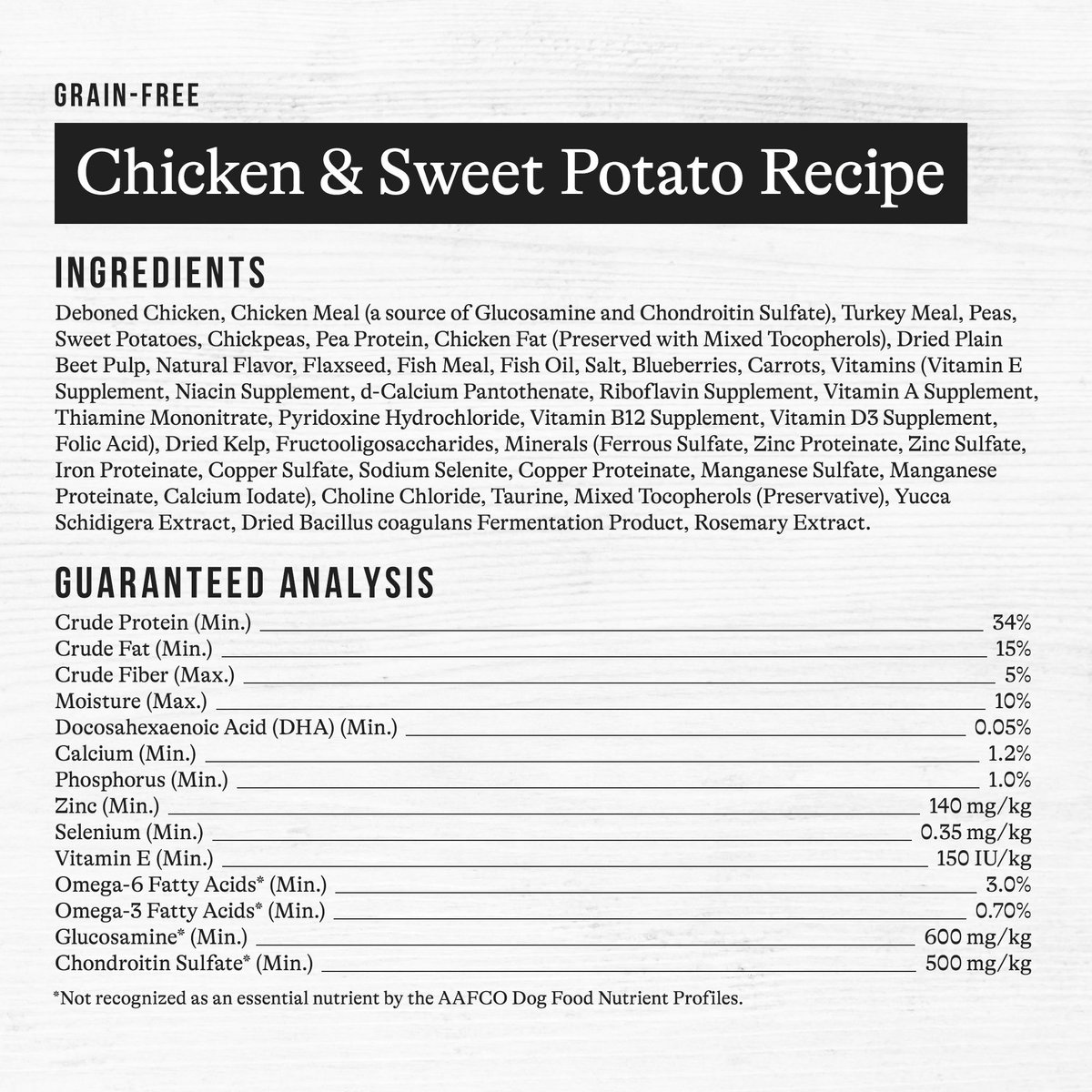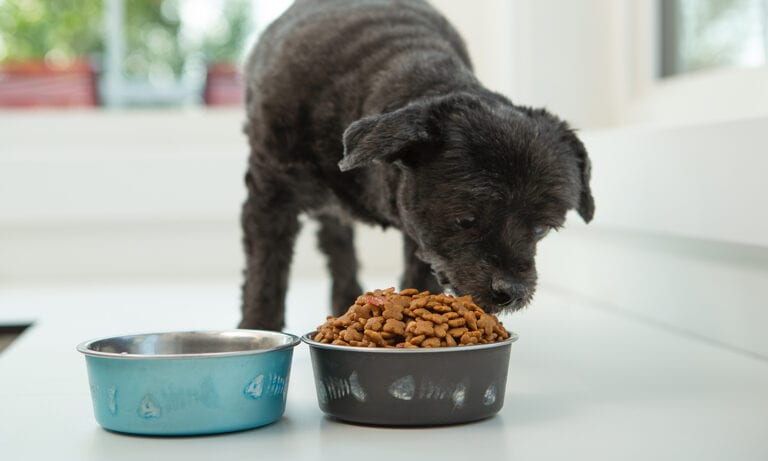When you hear the word “ash,” you probably think of the residue that lines the bottom of a fireplace. So, it might surprise and concern you to see ash listed on your furry friend’s pet food label, leaving you with questions about just why ash is a component of their food.
We talked to two vets to help us understand ash in pet food, including what it is, whether it’s harmful to your cat or dog’s health, how to find out the amount of ash in your pet’s food, and more.
In This Guide:
What Is Ash in Pet Food?
Ash, crude ash, incinerated residue, inorganic matter: These terms all refer to the same thing, and it’s not as concerning as it sounds. In the pet food industry, ash in pet food is very different from the ash at the bottom of your fireplace.
“Ash is what is left when a food sample is completely combusted (burned). It represents the mineral content of food,” says Dr. Jennifer Larsen, DVM, PhD, a professor of clinical nutrition in the School of Veterinary Medicine at University of California, Davis.
The minerals that remain after combustion originated from sources like bone, cartilage and other tissues, says Dr. Sara Ochoa, DVM, a veterinarian at Animal Hospital of West Monroe in West Monroe, Louisiana, and the co-founder of How To Pets. She adds that these ingredients naturally contain minerals like calcium, phosphorus, magnesium and potassium, among others.
In short, pet food manufacturers heat food to extremely high temperatures. The organic matter (bone, cartilage and tissues) burns up and leaves behind inorganic matter (minerals). What remains represents the total mineral content of the food, and this is called ash (or crude ash, inorganic matter, etc.). It’s in dry pet food and in wet pet food, although the percentage is often lower in the latter.
The Importance of Ash in Pet Food
Ash gives your pet essential minerals, says Dr. Ochoa. Ash is not a filler but rather a vital part of your pet’s diet.
“These minerals play crucial roles in various bodily functions, including bone health, nerve function, muscle contraction and enzyme reactions,” Dr. Ochoa says.
If there was absolutely no ash in your pet’s food, your pet would be missing out on minerals they need to remain healthy.
While the presence of ash plays a role in your pet’s diet. Dr. Ochoa points out that too much ash could be detrimental. If your pet consumes too many minerals, they may experience imbalances, which could contribute to health problems.
How To Find Ash Content in Dog Food and Cat Food
Now that you know what ash in pet food is, here’s how to find the ash content in your dog’s food or your cat’s food.
Grab your furry friend’s food bag and locate the “Guaranteed Analysis” section, which is usually on the back of the bag. This is where pet food manufacturers are required to include information about the percentages of four ingredients in their food:
- Protein
- Fat
- Fiber
- Moisture (water)
Offering any additional info—such as the amount of ash, amino acids, and omega-3 and omega-6 fatty acids—is completely voluntary and, therefore, not all cat food and dog food bags will display more than these four basic components.
Furthermore, when a manufacturer chooses to include the total ash content in the guaranteed analysis, “[the] ash value does not include information about specific nutrients,” says Dr. Larsen. This means you have no way of knowing how much of each individual mineral, such as calcium, phosphorus or magnesium, your pet is getting.
Take a look at this Guaranteed Analysis from a bag of Annamaet dry cat food. As you can see, the maximum amount of ash in this food is 7.5 percent.

Conversely, some Guaranteed Analysis labels don’t give the ash content, but they do offer some mineral content. However, because any info beyond the percentages of those four basic components is voluntary, the manufacturer may not include every single mineral that makes up the total ash content. Therefore, you can’t draw any conclusions about the total ash content because the amount of minerals listed may not be complete.
You can review the ingredient list for other minerals, but their presence—or absence— doesn’t tell you whether a food has lower ash or higher ash content.

For an example with minerals, check out this Guaranteed Analysis from a bag of American Journey dry dog food. This one doesn’t offer the ash content percentage, but it does show the amounts of minerals, including calcium, phosphorus, zinc and selenium, per kg of food.
Note that the figures are the minimum—not the maximum—and the amount is not given as a percentage of the total volume of food. And again, the list may or may not include all the minerals that make up the ash.
To learn the ash content of a dog or cat food when it’s not displayed on the Guaranteed Analysis, Dr. Ochoa recommends you contact the manufacturer. She says they should either be able to tell you the ash content or offer resources to help answer your questions.
FAQs about Ash in Pet Food
A:Ash is not bad for cats. In fact, cats need a certain amount of ash in their diet.
Dr. Ochoa notes that while ash doesn’t tend to negatively impact cats, it’s smart to choose a food with an ash content that falls within a reasonable range, generally 7 to 8 percent or lower.
“When it comes to assessing ash content in pet food, the key lies in the balance,” she says. “Too little ash could lead to mineral deficiencies, while excessive ash can cause imbalances in minerals, potentially leading to health issues.”
She also reminds pet parents that their specific pet’s health needs can determine the type of food that’s best for them, so talk to your vet.
Q:
What is considered low ash in cat food?
A:
Dr. Larsen explains that it’s hard to say what exactly qualifies as low-ash cat food because the Association of American Feed Control Officials (AAFCO), an independent organization that helps guide state, federal and international feed organizations, does not allow pet food manufacturers to make that claim.
“[It’s] not associated with health implications and we don’t have good data on typical amounts across pet food categories,” she explains.
She estimates that 4 to 5 percent ash content for kibble and 2 percent for wet foods could be on the low side, but she notes that those are arbitrary values.
Q:
Does ash in cat food cause crystals?
Q:
Is ash bad for dogs?
A:
No, ash is not bad for dogs. As is the case with cats, ash is a necessary part of a dog’s healthy, balanced diet. Without ash, your dog could become nutrient deficient, but too much ash could lead to mineral imbalances and potential health issues.
Q:
What is considered low ash in dog food?
A:
Dr. Larsen’s explanation of what qualifies as low-ash cat food also applies to low-ash dog food because the AAFCO doesn’t allow pet food manufacturers to claim their food is low ash.
Again, she offers 4 to 5 percent ash content for dry kibble and 2 percent for wet food as possible values for low-ash food, but the same disclaimer applies: Those are arbitrary values.
Share:









